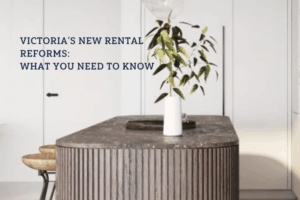The depreciation of your investment property can help your bottom line at tax time. Seasoned property investors are well aware of this, with many even taking it into account before purchasing investment properties. But using property depreciation to increase your tax return isn’t a trick exclusively for the pros. It can be done quite simply via a depreciation schedule.
Generally, all it takes is for a qualified quantity surveyor to inspect your home and prepare a report. Your accountant can then use this to help you claim substantial savings. Despite this, thousands of dollars go unclaimed by investors.
What is a Depreciation Schedule Exactly?
With property depreciation, there are two types of allowances available:
- Plant and equipment – refers to the depreciation of removable items within the building like ceiling fans, carpet, floor coverings, dishwashers, blinds etc.
- Building allowance – refers to construction costs of the building, for example brickwork and concrete.
You can depreciate the item itself as well as associated delivery and installation costs. Generally speaking, you can still depreciate items you didn’t buy or install yourself and came with the house, such as an oven.
The depreciation schedule will create a report where a fraction of these costs is depreciated each year that the property is used as an investment up until a certain amount. Depreciation will offset any earnings you make through the investment property, lowering the amount of tax you pay by reducing your overall taxable income.
Restrictions for Subsequent Investors
The 2017 federal budget introduced changes that tightened the rules of using depreciation schedules. However, these only apply to investors who bought property after 9 May 2017. If you purchased your property prior to this date, these changes don’t affect you and you can use a full depreciation schedule without any complex changes to worry about.
Under the new rules, acquisition of plant and equipment for property purchased after 9 May will be reflected in the cost base for capital gains tax purposes for subsequent investors. This means the original purchaser can claim a deduction over the life of the asset but not subsequent owners.
Restrictions on Improvements to the Property
Repairs that are necessary to get your property in an appropriate condition to generate income as an investment asset, as well as those ongoing maintenance expenses are allowed. Any improvements can be claimed as a capital allowance deduction, however, generally over 40 years.
Cost of a Depreciation Schedule
The cost of producing a depreciation schedule can vary with each company, ranging from just under $300 without an inspection to over $500 with an inspection. An inspection is highly recommended as a professional will look at every facet of your property and ensure all of the legally allowed deductions you can make are taken into account.
Without an inspection, the schedule can only be based off whatever you report about the property and may miss some things. The costs you incur to have the depreciation schedule created is also tax deductible which is offset against your earnings in your tax return.
If you’re thinking about purchasing an investment property, get in touch with one of our agents for assistance. If you’re thinking of renting out your property, we can give you a free appraisal.
Please note the information in this article is intended to be of general nature and does not take your personal circumstances into account. Consider consulting a registered accountant or tax agent for specific advice.





